Input interpretation

1, 3-butadiene
Chemical names and formulas
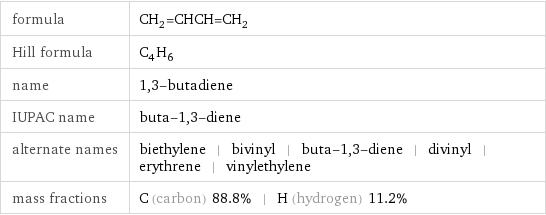
formula | CH_2=CHCH=CH_2 Hill formula | C_4H_6 name | 1, 3-butadiene IUPAC name | buta-1, 3-diene alternate names | biethylene | bivinyl | buta-1, 3-diene | divinyl | erythrene | vinylethylene mass fractions | C (carbon) 88.8% | H (hydrogen) 11.2%
Lewis structure
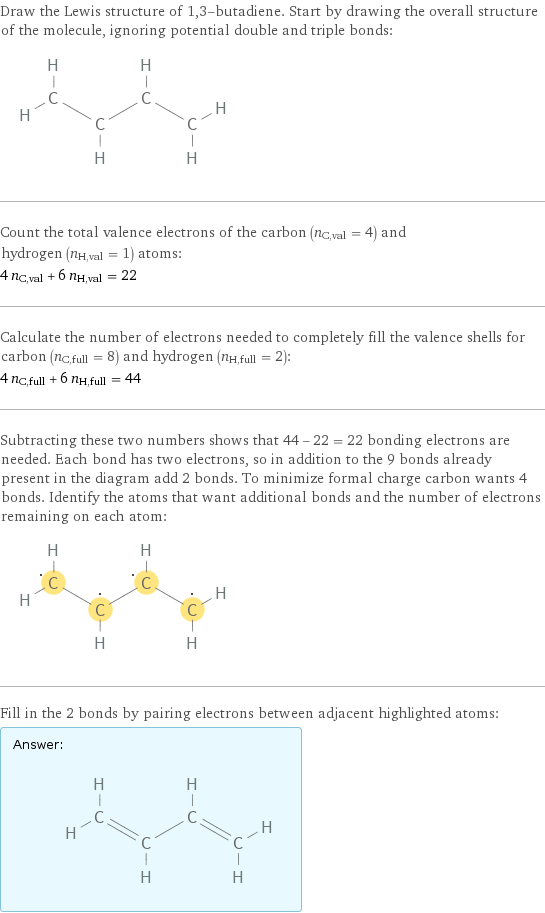
Draw the Lewis structure of 1, 3-butadiene. Start by drawing the overall structure of the molecule, ignoring potential double and triple bonds: Count the total valence electrons of the carbon (n_C, val = 4) and hydrogen (n_H, val = 1) atoms: 4 n_C, val + 6 n_H, val = 22 Calculate the number of electrons needed to completely fill the valence shells for carbon (n_C, full = 8) and hydrogen (n_H, full = 2): 4 n_C, full + 6 n_H, full = 44 Subtracting these two numbers shows that 44 - 22 = 22 bonding electrons are needed. Each bond has two electrons, so in addition to the 9 bonds already present in the diagram add 2 bonds. To minimize formal charge carbon wants 4 bonds. Identify the atoms that want additional bonds and the number of electrons remaining on each atom: Fill in the 2 bonds by pairing electrons between adjacent highlighted atoms: Answer: | |
3D structure
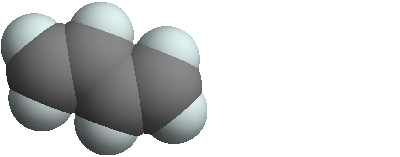
3D structure
Basic properties
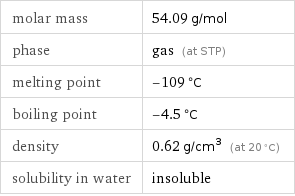
molar mass | 54.09 g/mol phase | gas (at STP) melting point | -109 °C boiling point | -4.5 °C density | 0.62 g/cm^3 (at 20 °C) solubility in water | insoluble
Units

Gas properties (at STP)
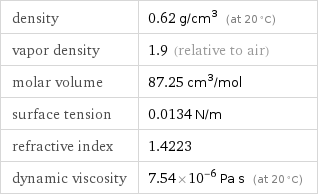
density | 0.62 g/cm^3 (at 20 °C) vapor density | 1.9 (relative to air) molar volume | 87.25 cm^3/mol surface tension | 0.0134 N/m refractive index | 1.4223 dynamic viscosity | 7.54×10^-6 Pa s (at 20 °C)
Units

Thermodynamic properties
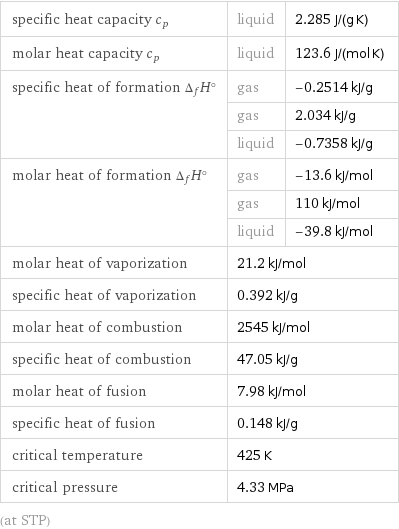
specific heat capacity c_p | liquid | 2.285 J/(g K) molar heat capacity c_p | liquid | 123.6 J/(mol K) specific heat of formation Δ_fH° | gas | -0.2514 kJ/g | gas | 2.034 kJ/g | liquid | -0.7358 kJ/g molar heat of formation Δ_fH° | gas | -13.6 kJ/mol | gas | 110 kJ/mol | liquid | -39.8 kJ/mol molar heat of vaporization | 21.2 kJ/mol | specific heat of vaporization | 0.392 kJ/g | molar heat of combustion | 2545 kJ/mol | specific heat of combustion | 47.05 kJ/g | molar heat of fusion | 7.98 kJ/mol | specific heat of fusion | 0.148 kJ/g | critical temperature | 425 K | critical pressure | 4.33 MPa | (at STP)
Chemical identifiers

CAS number | 106-99-0 Beilstein number | 605258 PubChem CID number | 7845 PubChem SID number | 24857754 SMILES identifier | C=CC=C InChI identifier | InChI=1/C4H6/c1-3-4-2/h3-4H, 1-2H2 RTECS number | EI9275000 MDL number | MFCD00008659
NFPA label

NFPA label
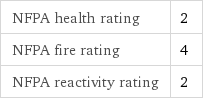
NFPA health rating | 2 NFPA fire rating | 4 NFPA reactivity rating | 2
Safety properties

flash point | -76.11 °C autoignition point | 420 °C lower explosive limit | 2% (concentration in air) upper explosive limit | 11.5% (concentration in air)

DOT hazard class | 2.1 DOT numbers | 1010
Toxicity properties

long-term exposure limit | 22 mg/m^3 (over 8 hours) RTECS classes | tumorigen | mutagen | reproductive effector | human data
Units
